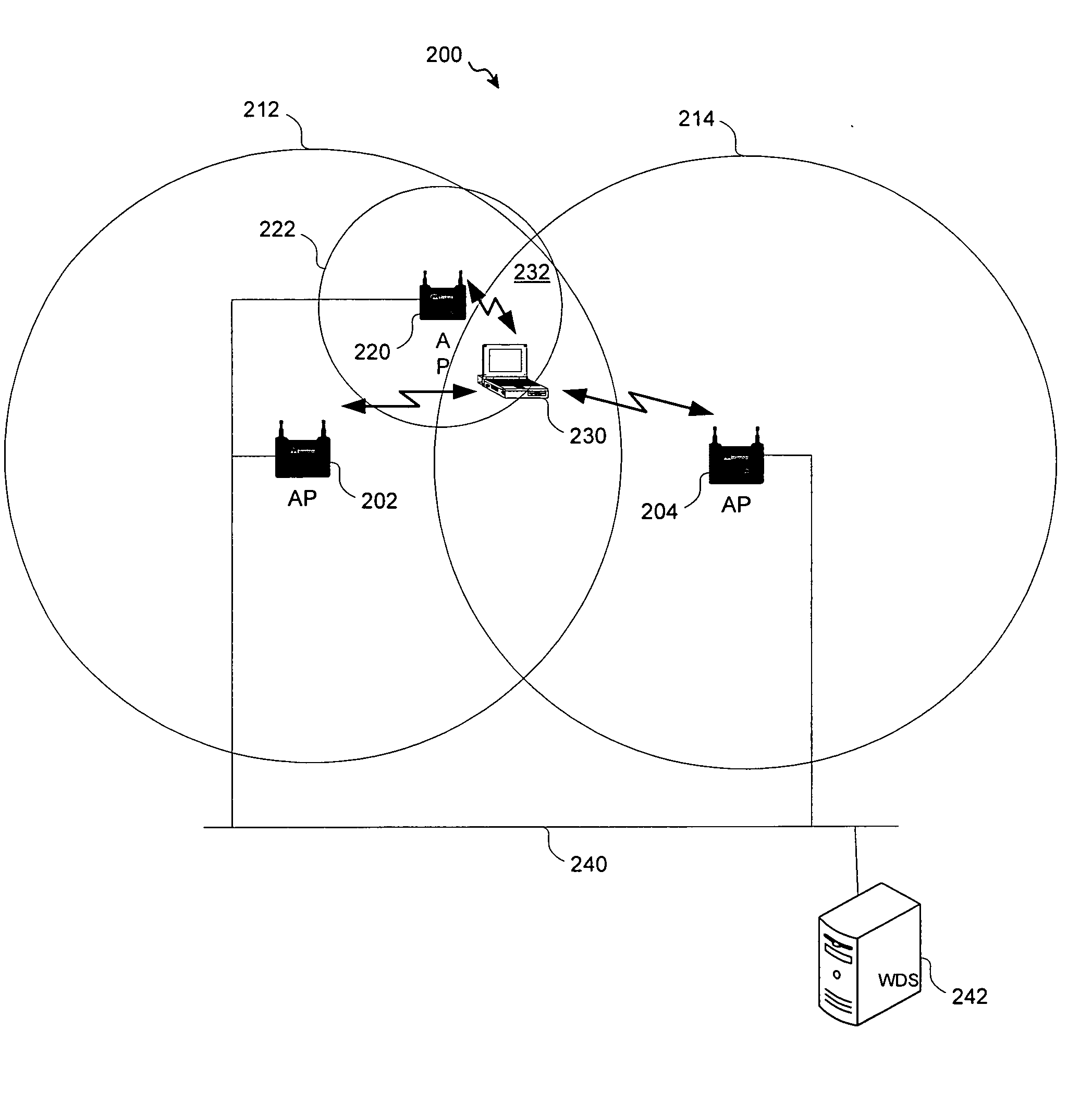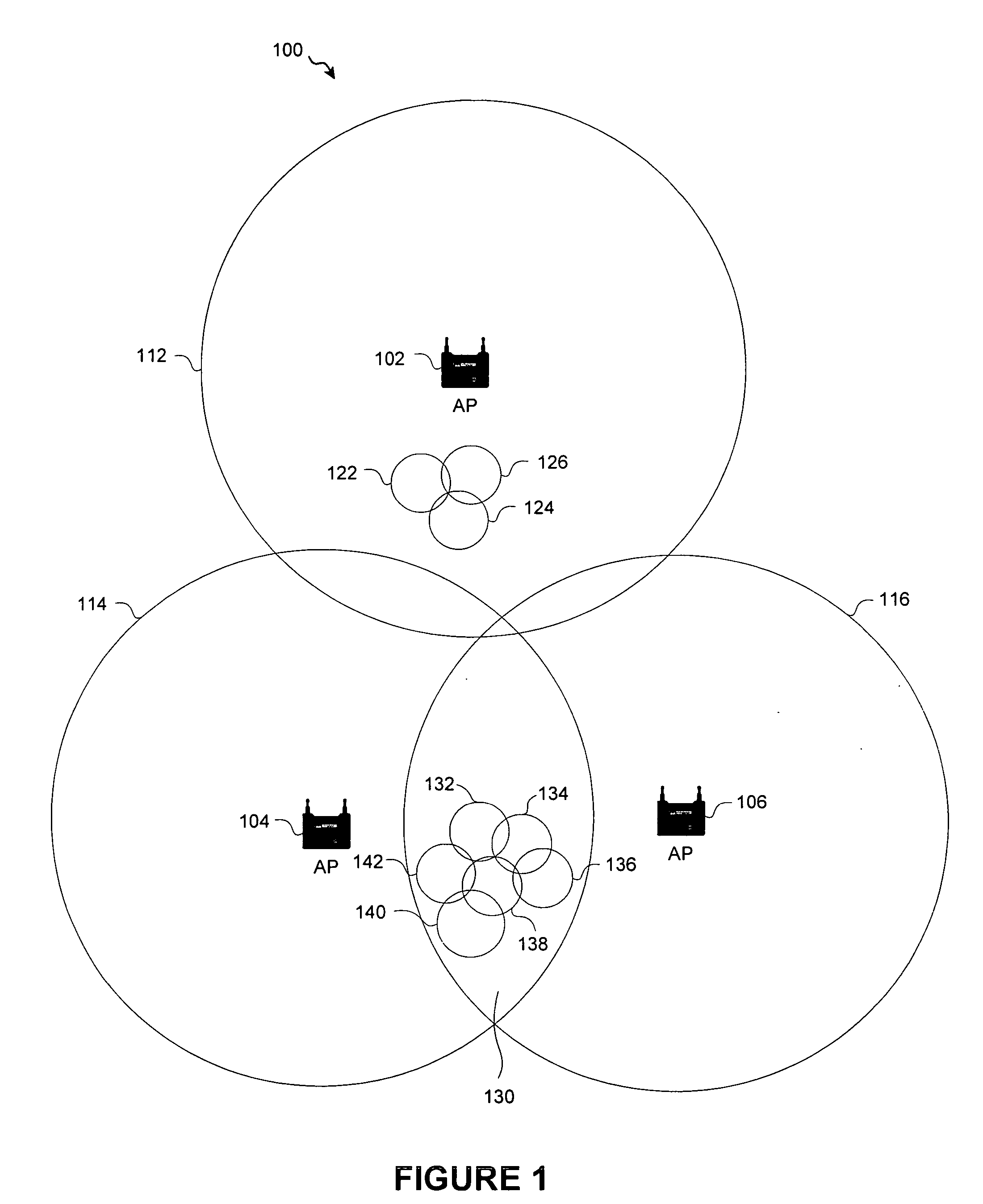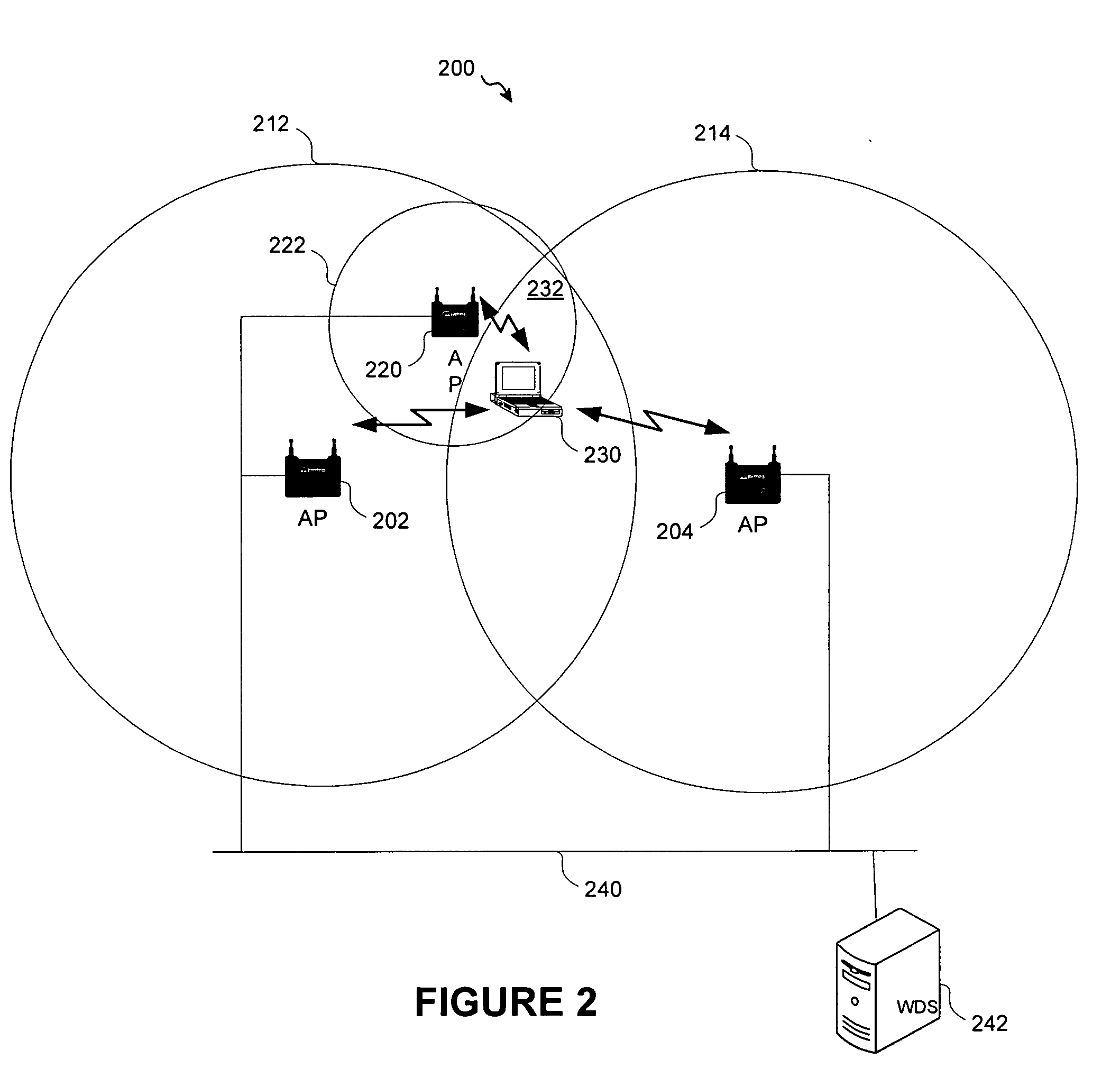System and method for integrated WiFi/WiMax neighbor AP discovery and AP advertisement
- Summary
- Abstract
- Description
- Claims
- Application Information
AI Technical Summary
Benefits of technology
Problems solved by technology
Method used
Image
Examples
Embodiment Construction
[0021] Throughout this description, the preferred embodiment and examples shown should be considered as exemplars, rather than limitations, of the present invention. An aspect of the present invention provides for integrated neighbor AP discovery for AP's on two different types of networks (e.g. WiMax / WiFi ) and AP advertisement that facilitates enhanced roaming in a Wireless Metropolitan Area Network (WMAN).
[0022] For example, the network comprises “WiMax” access points (APs), equipped with an IEEE 802.16e-compliant “WiMax” radio, “WiFi” APs, equipped with an IEEE 802.11-compliant radio, and dual-mode WiFi / WiMax mobile nodes (MNs), equipped with both a “WiMax” radio and a “WiFi” radio. In a preferred embodiment, long-range WiMax APs will provide a an “umbrella” wireless network that spans an entire metropolitan area; whereas, relatively short-range WiFi APs provide high-speed “overlay” 802.11 radio coverage in select, relatively small, hot-spot areas. By definition, a first AP is ...
PUM
 Login to View More
Login to View More Abstract
Description
Claims
Application Information
 Login to View More
Login to View More - R&D
- Intellectual Property
- Life Sciences
- Materials
- Tech Scout
- Unparalleled Data Quality
- Higher Quality Content
- 60% Fewer Hallucinations
Browse by: Latest US Patents, China's latest patents, Technical Efficacy Thesaurus, Application Domain, Technology Topic, Popular Technical Reports.
© 2025 PatSnap. All rights reserved.Legal|Privacy policy|Modern Slavery Act Transparency Statement|Sitemap|About US| Contact US: help@patsnap.com



